Rib and Sternum Fractures From Falls: Global Burden of Disease and Predictions
- PMID: 40584268
- PMCID: PMC12205187
- DOI: 10.1177/11795972251350223
Rib and Sternum Fractures From Falls: Global Burden of Disease and Predictions
Abstract
Background: By combining existing Global Burden of Disease (GBD) data with the economic conditions of different regions, we can better understand disease trends and make more accurate estimations, facilitating effective public health interventions. Medical institutions can consequently allocate resources more efficiently. For patients, this helps lower disease risk and reduce the overall disease burden in affected areas.
Methods: We analyzed health patterns in 204 countries using GBD 2021 methodologies and conducted separate analyses of disease burden in China and worldwide. We estimated incidence, prevalence, and years lived with disability (YLDs). We further assessed disease status by incorporating Socio-Demographic Index (SDI) values. In addition, we used Mendelian randomization to identify factors leading from falls to thoracic rib fractures, and we investigated the key protein involved in thoracic rib fractures through detection of 4907 plasma proteins.
Results: From 1990 to 2021, the age-standardized incidence rate (ASIR) and age-standardized prevalence rate (ASPR) generally showed an upward trend, although male ASIR, and ASPR displayed a slight decline. In China, however, ASIR and ASPR reached a turning point in 2000, dipped in 2005, then trended upward again. Morbidity and prevalence were negatively correlated with SDI. Based on Mendelian randomization analyses, falls leading to thoracic rib fractures were linked to education level and osteoporosis. Moreover, HAMP was identified as the key protein in thoracic rib fractures.
Conclusion: As global populations age, analyzing the global burden of thoracic rib fractures caused by falls from 1990 to 2021 can help guide the development of effective public health prevention strategies and optimize the allocation of existing medical resources.
Keywords: ASIR; ASPR; GBD; MR; fall.
© The Author(s) 2025.
Conflict of interest statement
The author(s) declared no potential conflicts of interest with respect to the research, authorship, and/or publication of this article.
Figures
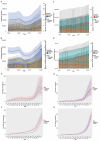
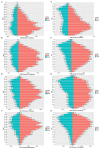
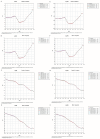
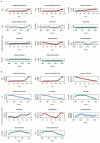

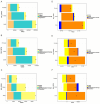
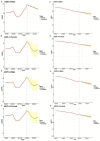
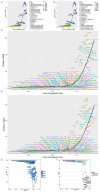

Similar articles
-
Global, regional, and national burden of endometriosis among women of childbearing age from 1990 to 2021: a cross-sectional analysis from the 2021 global burden of disease study.Int J Surg. 2025 Jun 20. doi: 10.1097/JS9.0000000000002647. Online ahead of print. Int J Surg. 2025. PMID: 40540534
-
Global, regional, and national burden of fracture of pelvis, 1990-2021: analysis of data from the Global Burden of Disease Study 2021.Front Public Health. 2025 Jun 18;13:1610604. doi: 10.3389/fpubh.2025.1610604. eCollection 2025. Front Public Health. 2025. PMID: 40606097 Free PMC article.
-
Global, Regional, and National Burden and Trends of Soft Tissue and Other Extraosseous Sarcomas From 1990 to 2021.Cancer Control. 2025 Jan-Dec;32:10732748251355841. doi: 10.1177/10732748251355841. Epub 2025 Jun 28. Cancer Control. 2025. PMID: 40580032 Free PMC article.
-
Interventions for preventing falls in Parkinson's disease.Cochrane Database Syst Rev. 2022 Jun 6;6(6):CD011574. doi: 10.1002/14651858.CD011574.pub2. Cochrane Database Syst Rev. 2022. PMID: 35665915 Free PMC article.
-
Effectiveness and safety of vitamin D in relation to bone health.Evid Rep Technol Assess (Full Rep). 2007 Aug;(158):1-235. Evid Rep Technol Assess (Full Rep). 2007. PMID: 18088161 Free PMC article.
References
-
- Coary R, Skerritt C, Carey A, Rudd S, Shipway D. New horizons in rib fracture management in the older adult. Age Ageing. 2020;49(2):161-167. - PubMed
-
- Song J, Pan T, Xu Z, et al. A systematic analysis of chronic kidney disease burden attributable to lead exposure based on the global burden of disease study 2019. Sci Total Environ. 2024;908:168189. - PubMed
LinkOut - more resources
Full Text Sources
Research Materials

